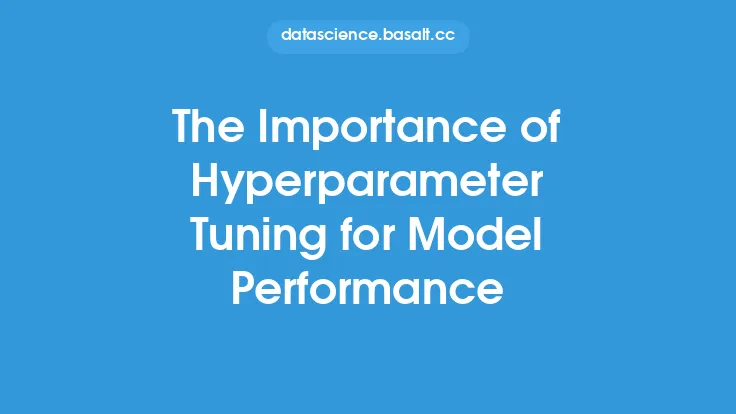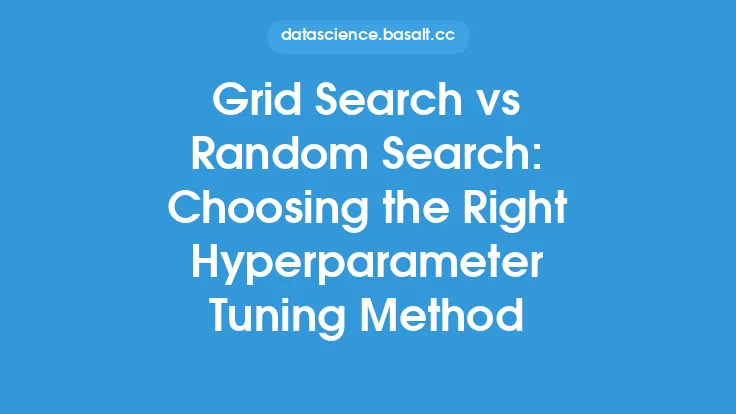When it comes to machine learning, ensemble methods have proven to be highly effective in improving the performance and robustness of models. These methods involve combining the predictions of multiple base models to produce a single, more accurate prediction. However, the success of ensemble methods depends heavily on the choice of hyperparameters, which are parameters that are set before training the model. Hyperparameter tuning for ensemble methods is a critical step in ensuring that the model performs optimally. In this article, we will delve into the strategies and considerations for hyperparameter tuning in ensemble methods.
Introduction to Ensemble Methods
Ensemble methods are a class of machine learning techniques that combine the predictions of multiple base models to produce a single prediction. The idea behind ensemble methods is that a group of models can perform better than any individual model. There are several types of ensemble methods, including bagging, boosting, and stacking. Bagging involves training multiple instances of the same model on different subsets of the data and combining their predictions. Boosting involves training multiple models sequentially, with each model attempting to correct the errors of the previous model. Stacking involves training multiple models and then using a meta-model to combine their predictions.
Hyperparameter Tuning for Ensemble Methods
Hyperparameter tuning for ensemble methods involves adjusting the hyperparameters of the base models and the ensemble method itself to optimize performance. The hyperparameters of the base models include parameters such as the learning rate, regularization strength, and number of hidden layers. The hyperparameters of the ensemble method include parameters such as the number of base models, the combination method, and the weighting scheme. Hyperparameter tuning for ensemble methods can be challenging due to the large number of hyperparameters that need to be tuned. Additionally, the interactions between the hyperparameters of the base models and the ensemble method can be complex, making it difficult to optimize performance.
Strategies for Hyperparameter Tuning
There are several strategies that can be used for hyperparameter tuning in ensemble methods. One approach is to use a grid search, which involves exhaustively searching through a predefined set of hyperparameters. Another approach is to use a random search, which involves randomly sampling the hyperparameter space. Bayesian optimization is another approach that can be used, which involves using a probabilistic model to search for the optimal hyperparameters. Gradient-based optimization methods can also be used, which involve using gradient descent to search for the optimal hyperparameters.
Considerations for Hyperparameter Tuning
When performing hyperparameter tuning for ensemble methods, there are several considerations that need to be taken into account. One consideration is the computational cost of hyperparameter tuning, which can be high due to the large number of hyperparameters that need to be tuned. Another consideration is the risk of overfitting, which can occur when the model is too complex and fits the noise in the training data. Regularization techniques, such as L1 and L2 regularization, can be used to prevent overfitting. Additionally, techniques such as cross-validation can be used to evaluate the performance of the model on unseen data.
Ensemble-Specific Hyperparameters
In addition to the hyperparameters of the base models, there are several ensemble-specific hyperparameters that need to be tuned. One example is the combination method, which determines how the predictions of the base models are combined. Common combination methods include averaging, voting, and stacking. Another example is the weighting scheme, which determines how the predictions of the base models are weighted. Common weighting schemes include uniform weighting, where each base model is given equal weight, and non-uniform weighting, where the base models are given different weights based on their performance.
Hyperparameter Tuning for Specific Ensemble Methods
Different ensemble methods have different hyperparameter tuning requirements. For example, bagging requires tuning the number of base models and the combination method. Boosting requires tuning the number of base models, the learning rate, and the combination method. Stacking requires tuning the number of base models, the combination method, and the meta-model. Additionally, the hyperparameter tuning requirements can vary depending on the specific problem and dataset.
Conclusion
Hyperparameter tuning for ensemble methods is a critical step in ensuring that the model performs optimally. The choice of hyperparameters can have a significant impact on the performance of the model, and hyperparameter tuning can be challenging due to the large number of hyperparameters that need to be tuned. By understanding the strategies and considerations for hyperparameter tuning, practitioners can optimize the performance of their ensemble models and achieve better results. Additionally, by taking into account the ensemble-specific hyperparameters and the hyperparameter tuning requirements for specific ensemble methods, practitioners can further improve the performance of their models.





